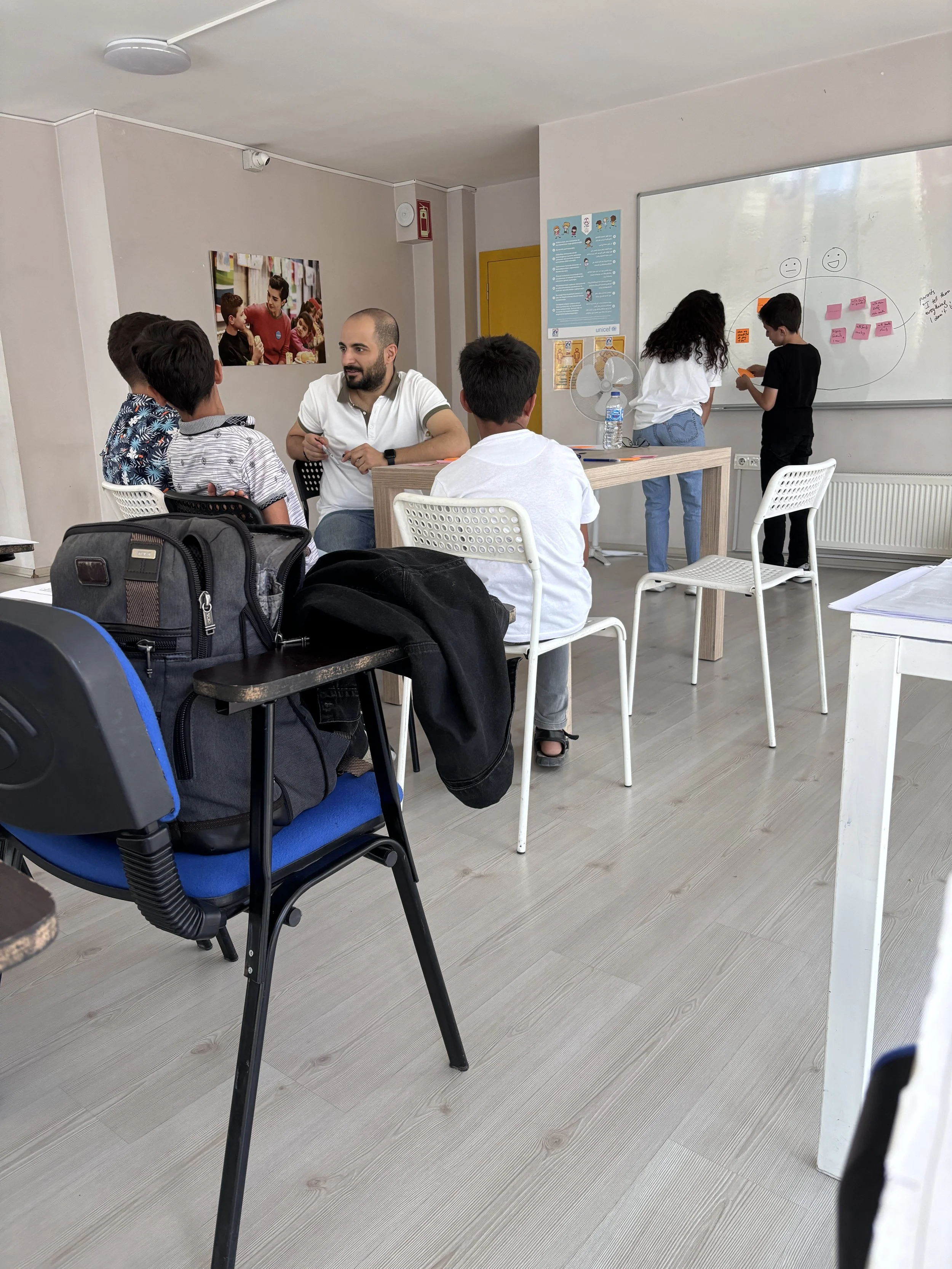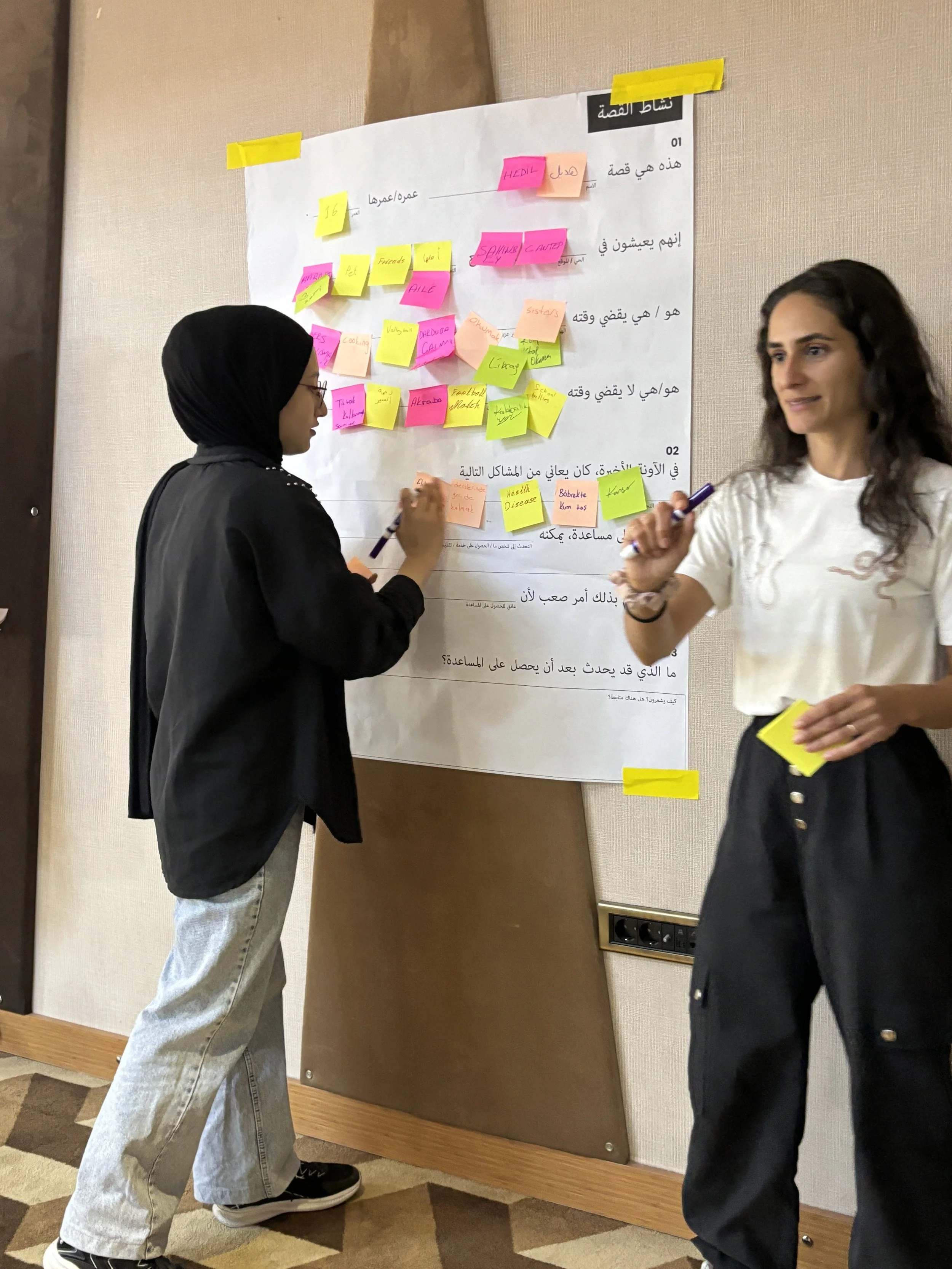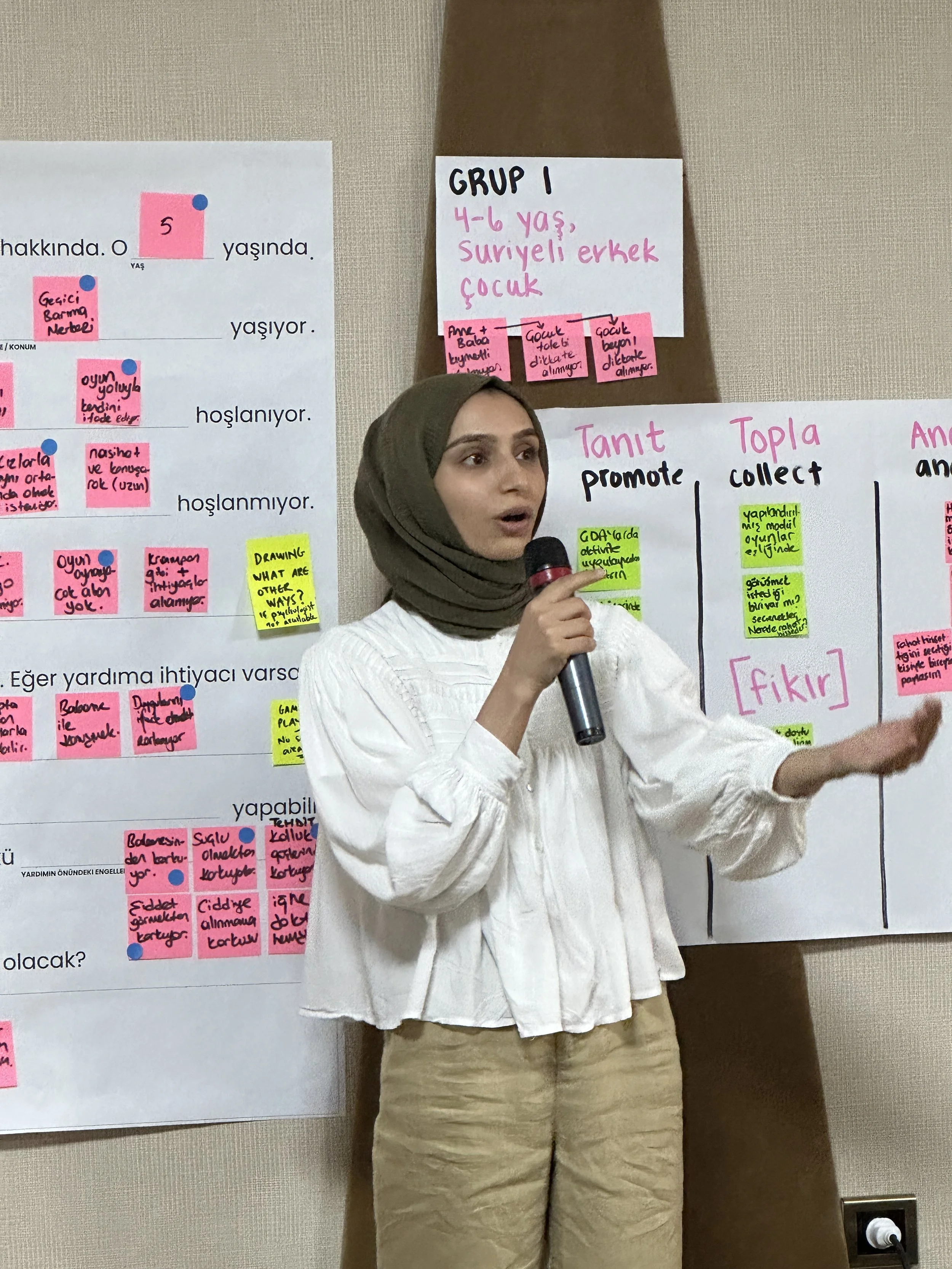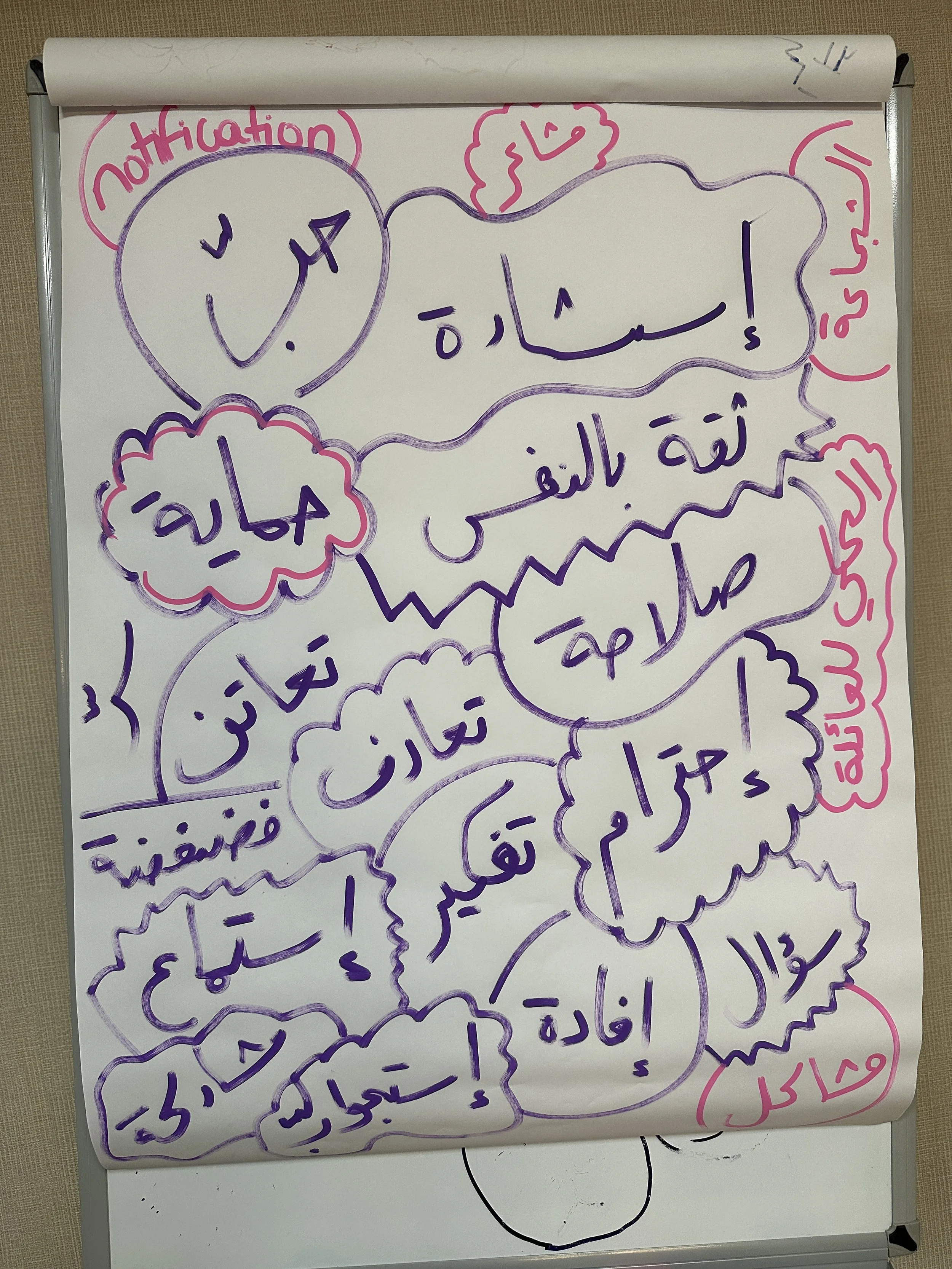
client
UNICEF Turkey
scope
participatory research
channel mapping
workshop planning and facilitation
prototype development and testing
documentation
role
research design
insight generation
prototype development
facilitation
writer
challenge
Children’s voices are missing from the programs meant to benefit them. The 2023 earthquake affected 9.1 million people, with 3 million individuals displaced and an already under pressure infrastructure that needed to support long-term refugee communities and host communities. As organizations sprung into action, hotlines and helplines became lifelines. While effective, not all voices were adequately sought or represented.
As Programme Director and the lead on participatory research, projects that involve research go beyond typical in-depth interviews and focus groups. I employ engaging activities that are age-appropriate, creative, and reflective in order to encourage honesty and self-expression, as well as unconscious associations. (Left: card sort activity; Right: community mapping / visualization)
insight
Trust is built through a sense of safety—both physical and mental. Instead of relying on in-depth interviews, which seek information but not collaboration, researchers used participatory methods—card sorts, drawing and visualizations, ‘pass the ball’, and more—to help adolescents creatively and comfortably express their needs and voice their concerns.
Research was conducted with 15 local partners, 13 caregivers, and 49 adolescents (aged 4-17) in Ankara and Gaziantep. The process revealed a number of critical insights, summarized below:
‘Feedback’ is perceived as rude and inappropriate in Turkish and Syrian cultures. Without a direct translation, caregivers used the term ‘ayıp’, meaning shame or disrespect. The practice was seen as critical or risky—inviting repercussions like service disruption, discrimination, or deportation.
Sharing thoughts and feelings through self-expression was more readily accepted than ‘giving feedback’.
Incomplete feedback loops diminish trust. When families did share feedback, and received no response or follow-up, this led to distrust in digital mechanisms especially. In-person methods were preferred, and still required follow up to build trust.
Schools not a space where children feel safe, seen or respected. After the age of 7, children reported experiencing or witness bullying from both peers and teachers.
Privacy (information safety) is non-negotiable. There is shame around needing help and a strong fear of gossip. Fear of having their problems known by others led to a fear of sharing feedback.
solution
Involve, don’t just center, children in the design of the solutions they will engage with. Participatory activities proved successful; not only did they evade the stigma around feedback, but they also encouraged participation regardless of status (host or refugee), gender, age, language, or ability, and led to the development of 8 prototype concepts.
A team of four, including myself, worked rapidly to synthesize research in a matter of 3 days, producing research insights and developing the curriculum and agenda for co-creation workshops that included local partners, caregivers, and adolescents in Gaziantep. Each group participation in idea generation sprints, ensuring that the community could validate research findings and generate solutions to the challenges they face. (In total , 29 partners, 15 caregivers, and 35 children and adolescents participated in co-creation workshops.)
Glimpses from the co-creation workshop: Participants reflected on common scenarios to share help-seeking behaviors, normative barriers, possible solutions, and new framing for feedback.
Child-centric research turns to child-approved mechanisms for feedback. After over 100+ in depth interviews and co-creation sessions with adolescents, caregivers, and local partners, a total of 8 intervention concepts were tested. Since this initial round of testing, 3 concepts have moved to alpha prototyping and will continue to engage the communities in their development.
Reports, prototypes, and documentation belong to UNICEF and cannot be shared publicly. Please reach out to me directly for more information—I’d love to tell you more about this work.




